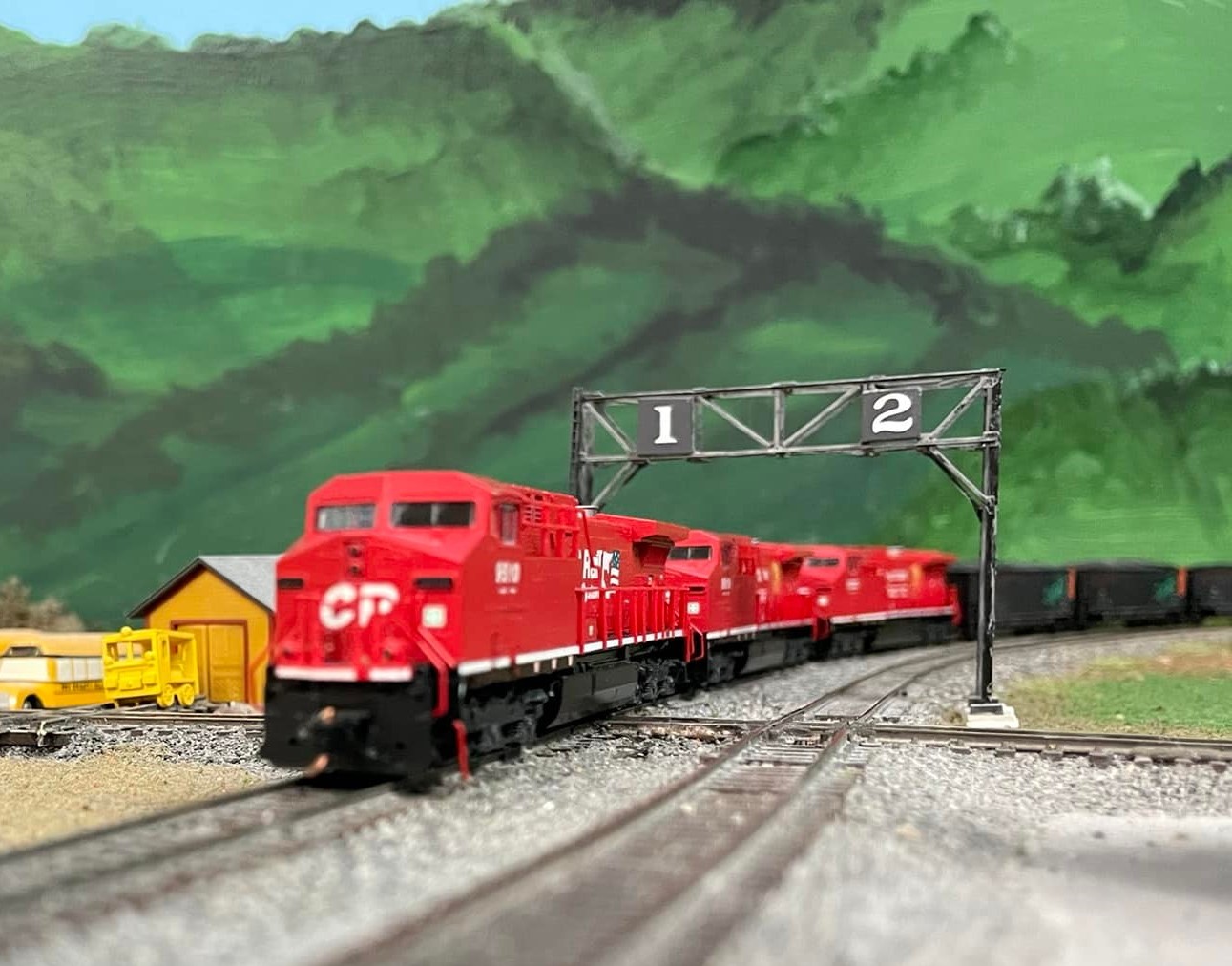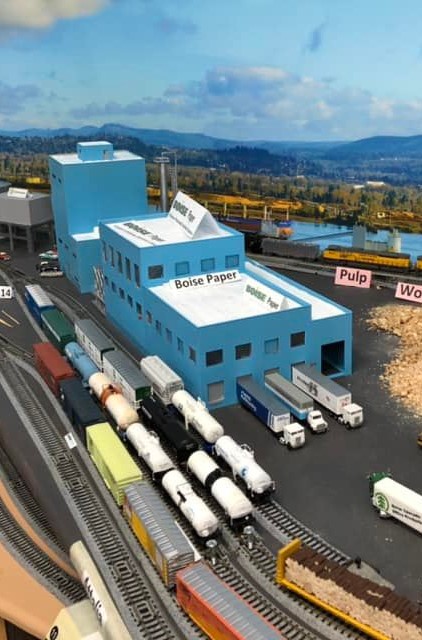On Sheet – IDing the Perp
On Sheet – IDing the Perp
 ne of those problems you might face on your first op session is where everything is, industry-wise. Sure, your waybills/switchlists/tabs might dictate that a car be dropped at Amalgamated Antimatter but it’s one of a dozen industries on your pike. How do your newbie crews find it? Well, there are many ways you can do this, all of them with pros and cons.
ne of those problems you might face on your first op session is where everything is, industry-wise. Sure, your waybills/switchlists/tabs might dictate that a car be dropped at Amalgamated Antimatter but it’s one of a dozen industries on your pike. How do your newbie crews find it? Well, there are many ways you can do this, all of them with pros and cons.
Written Instructions: Sure, you can provide documentation for your operations, but generally one operator in ten will read them (and that’s only if he’s bored).
Obvious Building Functionality: A fuel distributor and a stock pen are pretty obvious. That might help a crew locate their spur. But that falls apart when you’ve got several similar industries (i.e. coal tipples).

On the LM&O, the mainline track numbers are clearly denoted on signal bridges. This stretch of double track has three such bridges to prevent those embarrassing collisions. (Photo: Jim M)
Exterior Building Names: Sometimes you can indicate a building by its name on a billboard or wall-painting. Sure. But then again, remember that we are usually servicing the back side of the building and industries usually don’t advertise to hobos.
Fascia/Panel Labeling: Okay, yes, you can use rub-on decals or a very steady hand to add your industry names to your control panel and/or fascia (often the same thing). The problem with this is they are generally low and, when operators crowd, often hard to see.
Industry Card On Site: Some sort of a legend or card can be placed on site near in that area. And that’s not bad (except that they always seem to fall on the floor and stepped on when things get hectic). One idea is to shrink the card down to waybill size, print it with yellow backing and put it in the “IN” box (if you are using card boxes).
Map on Card: If your switchlist or even your waybills have the room, you might be able to sneak a map onto those. Maybe.
Non-prototypical Markers: Yeah, putting non-prototypical markers is pretty clear-cut. But that shabby, weathered coal mine you worked so much on – do you really have the heart to take a label-maker to it?
The Olde-World Map Maker Solution: If you don’t have scenery yet (or your scenery is nothing more than mock-ups or blocks of wood), write the name of the place directly on the site/mock-up) with a sharpie. That makes it obvious. You can even write other directions like “East =>” and “Yard Limits” on your plywood until the scenery goes in.
Blunt Repetition: Just tell your operators over and over where these places are. Maybe someday they’ll remember.

On Doc Andy’s WAZU Lines, it’s pretty obvious where everything is. It’s one solution that generally works until all the scenery goes in.
OTJ Training: An expansion of Blunt Repetition – just keep operating until your crews finally learn where places are. Sometimes you might keep crews on the same job until it’s obvious. That worked on a local session until the day someone couldn’t make it and a newbie had to fill in. Square one.
So, what is the best way? How will you be able to allow operators to stream into your layout room, turn the division on and watch them silently proceed through their efforts?
You won’t. Get used to it. There will always be questions (and yes, hosts laugh at the thought of there being no dumb questions). The best you can do is rely on a mixture of all of the above. Some of your buildings might manage a billboard. Some of your buildings will be obvious. Some of your crews will stick to their jobs until they get comfortable with them. Maybe you’ll mark one or two of the less-obvious ones on the fascia. Maybe you’ll cover it in the briefing over and over until the crews get it right.
It’s never obvious and it’s never easy. But that’s model railroading. It never goes how we expect. Which is, in a way, fun in itself.
